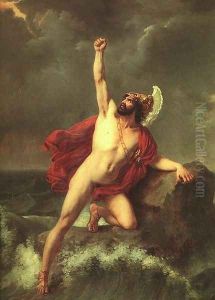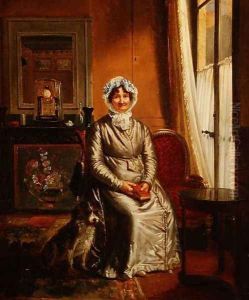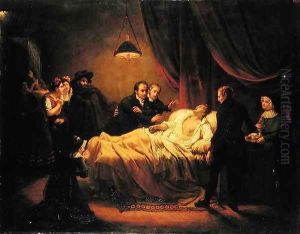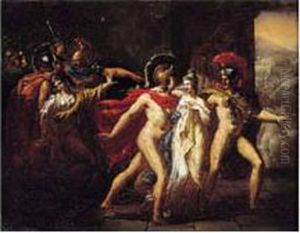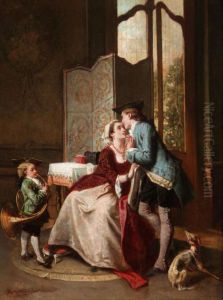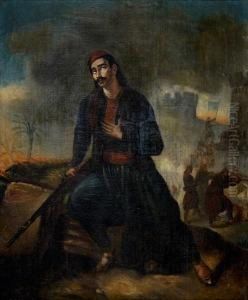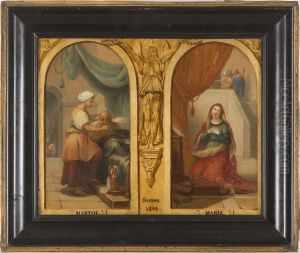Henri Auguste Calixte Cesar Serrur Paintings
Henri Auguste Calixte César Serrur, commonly known as Henri Serrur, was a French historical painter born on March 13, 1794, in Paris, France. He was an active artist during a period that saw numerous political upheavals and transformations in the French art scene, including the fall of Napoleon's empire, the Restoration of the Bourbon monarchy, and the beginnings of the July Monarchy.
Serrur showed an early inclination towards art and trained under the prominent neoclassical painter Jean-Baptiste Regnault. He developed a painting style that reflected the neoclassical ideals of clarity, order, and harmony, which was characteristic of the era following the French Revolution. His training under Regnault provided him with a solid foundation in the classical traditions of French painting, which he later utilized in his historical and mythological works.
He exhibited for the first time at the Paris Salon of 1819, and continued to display his works there with regularity. Serrur gained recognition for his historical paintings, which often depicted scenes from French history with a romantic flair. His works were appreciated for their detailed representation of historical costumes and settings, as well as for their storytelling qualities.
Among his notable works are 'Catherine II Refusing to Allow the Burial of Potemkin' (1838) and 'The Children of Edward' (1830), the latter of which was based on the tragic episode of the young princes imprisoned in the Tower of London, a subject that resonated with the Romantic movement's fascination with the macabre and the heroic.
Serrur became a member of the Académie Royale de Peinture et de Sculpture and was awarded the Légion d'Honneur, a prestigious French order established by Napoleon Bonaparte. His career was marked by his adherence to the academic standards of his time, and he contributed to the transmission of traditional techniques and themes to subsequent generations of artists.
Henri Serrur's life and career spanned a dynamic period in French art, bridging the gap between neoclassicism and the emerging Romantic movement. He died on May 24, 1865, in Paris. His works remain as a testament to the historical and academic painting traditions of 19th-century France.
